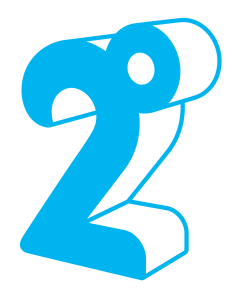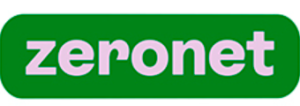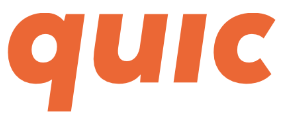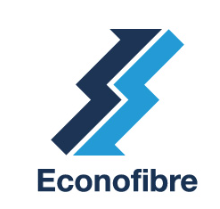Fibre 300/100 is the most popular internet plan in New Zealand. And for almost all of us, it’s more than suitable. In fact, many of us probably don’t even need these speeds, but because this is essentially the industry standard, it’s what most of us opt for.
For extra data-hungry households, it’s easy to upgrade this to a top-of-the-line Fibre Pro/Max plan (roughly 900/500Mbps). And this should be plenty for nearly all households and most small businesses. Although, technically speaking, you can still go faster. Which is where Hyperfibre comes in.
What is hyperfibre?
Hyperfibre uses the existing fibre network but, through the installation of a special Optical Network Terminal (ONT) in place of your existing Fibre box, it can deliver speeds far beyond a standard fibre connection.
In fact, it can deliver speeds of up to 10 gigabits per second. However, it’s worth noting that Hyperfibre plans usually come with speed options, and there are plans starting from just 2000Mbps.
What are the advantages of Hyperfibre?
Speed, speed, and more speed. Hyperfibre essentially provides the platform to have an ever-scaling setup of devices all accessing seamless, (near) lag-free, superfast wi-fi. And that speed can provide some excellent benefits:
For businesses
The most likely application for hyperfibre is within a business context.
Hyperfibre offers low latency which means the technology allows processing of a high volume of data messages with minimal delay. So, this ultrafast fibre offers great potential for businesses that transfer large amounts of data, such as in creative industries.
According to Chorus, the technology also offers great opportunities for industries that rely on real-time communication and high-resolution images, such as remote medical diagnostics and surgery, as well as gaming and interactive entertainment services.
For households
Hyperfibre doesn’t offer much benefit for households. Mainly due to the fact for almost every household in NZ, a Fibre 900/500 plan will be enough. And paying more for speeds you don’t use isn’t of benefit.
However, while an 8000Mbps hyperfibre plan may be overkill for anyone that isn’t a large-scale business, a 2000Mbps plan may be a suitable choice for a household with several gamers/streamers and/or members working from home in broadband-intensive roles.
In this case, everyone will be able to partake in their data-intensive activities at the same time, without experiencing significant lag or dips in speed.
Who provides hyperfibre?
Hyperfibre is not available in all areas (around 75% of towns and cities), and currently only one major provider, 2degrees, offers it, and then only to new customers signing up directly for a Hyperfibre plan, not existing customers. However, there are a few smaller broadband providers offering hyperfibre.
 2degrees
2degrees
2degrees currently has two unlimited hyperfibre plans. Both are eligible for a $10/month discount for customers with a 2degrees pay monthly mobile plan.
Hyperfibre 2 ($139/month*)
- Up to 2000Mbps download/upload speed
- Free Orbi Hyperfibre modem rental on a 12 month term ($15 shipping fee)
- Early exit fee (up to $199) applies on a 12 month plan
- Open term plan available, with the following costs:
- Connection fee: $99
- Modem charge: $599 + $15 shipping fee
Hyperfibre 4 ($169/month*)
- Up to 4000Mbps download/upload speed
- Free Orbi Hyperfibre modem rental on a 12 month term ($15 shipping fee)
- Early exit fee (up to $199) applies on a 12 month plan
- Open term plan available, with the following costs:
- Connection fee: $99
- Modem charge: $599 + $15 shipping fee
*Undiscounted price.
 Zeronet
Zeronet
Zeronet has just one unlimited hyperfibre plan on offer, available on a 12-month contract or open term plan.
Zeronet Hyperfibre ($159.99/month)
- $79.99/month for the first six months on a 12 month contract
- $169.99/month on an open plan
- Up to 2000Mbps upload/download
- $34.99 connection fee
- $15 modem delivery fee
- Free rental router on a 12-month fixed term plan ($59.99 on an open term plan)
 Quic
Quic
Quick is a no-frills internet company intended for tech-savvy customers who can set-up and maintain their own internet with minimal technical support from Quic.
Rocket 2G from Quic Broadband ($135/month)
- Unlimited data
- Up to 2000Mbps upload/download
- BYO router
- Open term
- $29 connection fee
 Econofibre
Econofibre
Econofibre offers three unlimited hyperfibre plans, each charges a $50 connection fee:
Hyperfibre 2 ($114/month)
- Up to 2000Mbps upload/download
Hyperfibre 4 ($150/month)
- Up to 4000Mbps upload/download
Hyperfibre 8 ($280/month)
- Up to 8000Mbps upload/download
All Econofibre hyperfibre plans are open term and allow BYO router. Fees apply for a Econofibre modem.
 Worldnet
Worldnet
Worldnet has three hyperfibre plans:
Hyperfibre 2G ($109/m on 12-month contract)
- Unlimited data
- Up to 2000Mbps upload/download
- $119/month on an open-term plan
Hyperfibre 4G ($149/m on 12-month contract)
- Unlimited data
- Up to 4000Mbps upload/download
- $159/month on an open-term plan
Hyperfibre 8G ($280/m on 12-month contract)
- Unlimited data
- Up to 8000Mbps upload/download
- $295/month on an open-term plan
All Worldnet hyperfibre plans allow BYO router or you can purchase a router from Worldnet, delivery fees applies.
Compare Broadband with Canstar Blue
To help you get a clearer picture of broadband providers in NZ, Canstar Blue rates all the big providers annually. We survey thousands of broadband customers and ask them to score their providers across categories including Overall Satisfaction, Value for Money and Customer Service. We then award the best broadband providers our Star Ratings and Most Satisfied Customer Award.
^ By clicking on a brand or 'details' button, you will leave Canstar Blue and be taken to either a product provider website or a Canstar Blue NZ brand page. You agree that Canstar Blue NZ’s terms and conditions apply (without limitation) to your use of this service,to any referral to a product provider from our website, and any transaction that follows. Canstar Blue may earn a fee for referrals from its website tables, and from sponsorship (advertising) of certain products. Payment of sponsorship fees does not influence the star rating that Canstar Blue awards to a sponsored product. Fees payable by product providers for referrals and sponsorship may vary between providers, website position, and revenue model. Sponsorship fees may be higher than referral fees. Sponsored products are clearly disclosed as such on website pages. They may appear in a number of areas of the website such as in comparison tables, on hub pages and in articles. Sponsored products may be displayed in a fixed position in a table, regardless of the product’s rating, price or other attributes. The table position of a sponsored product does not indicate any ranking, rating or endorsement by Canstar Blue. See How we are funded for further details.
Canstar Blue NZ research finalised in May 2024, published in June 2024.
See Our Ratings Methodology
The table above is an abridged version of our full research, to find out more about NZ’s best broadband providers, just click on the button below.
Compare broadband providers for free with Canstar!
About the author of this page
This report was written by Canstar Content Producer, Caitlin Bingham. Caitlin is an experienced writer whose passion for creativity led her to study communication and journalism. She began her career freelancing as a content writer, before joining the Canstar team.
Enjoy reading this article?
You can like us on Facebook and get social, or sign up to receive more news like this straight to your inbox.
By subscribing you agree to the Canstar Privacy Policy



Share this article